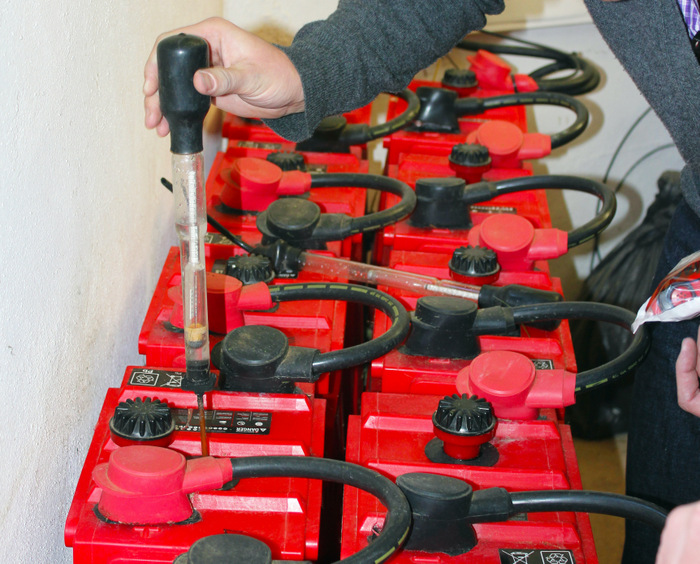The secret to off-grid solar installer success? Long-term service plans

Experienced off-grid PV installers will learn a number of valuable lessons over their career. Proper system sizing, installation and programming is certainly important. However, the long-term performance of a system is often determined by the actions – or inactions – of the homeowner when left on their own to monitor and maintain it. Neglect can cripple a system in a short amount of time.
Successful installers set themselves apart in this growing and competitive industry by gaining a strong understanding of the products they use, understanding customer expectations, being flexible and offering service level options that allow the customer to choose their own level of engagement.
Typical issues
Long-term savings is not only a selling point but may be a primary driver for those making the decision to go off-grid. Customers want an assurance that their initial upfront investment will deliver a solution that will save them money and provide reliable and sufficient power for years. For the homeowner, working with experienced and reputable industry professionals to size, design and install the system ensures it will do just that. Those who experience system performance issues requiring unexpected and costly repairs, poor service or simply can’t get the support they need from their installer will have a few things in common:
- they’ve opted for the lowest cost solution,
- it was improperly sized,
- the installer was in over their head and
- the homeowner was not adequately informed and equipped to keep it running smoothly.
Educating on options
Storage is a vital piece of the off-grid puzzle. Without a functional battery bank the customer will be inconvenienced by outages. Despite what may be advertised, no off-grid or battery-based backup system is entirely maintenance-free. Sealed deep-cycle batteries require periodic inspection, cleaning and terminal retorquing to maintain performance. Even lithium batteries require similar routine inspections and occasional balancing.
Installers should take the time to educate and provide the homeowner with options to allow them to make the best decision. Understanding the customer’s expectations and ability will allow the installer to select and package an ideal solution. This also helps to determine whether any monitoring and maintenance procedures required, based on the chosen battery technology and other system components, would be best left to the professional.
Traditional flooded lead-acid batteries have long been the installers preferred choice because they continue to offer the lowest storage cost and best value when comparing available battery technologies. The trade-off is the added maintenance throughout the year. Flooded models must be checked regularly, and distilled water added to the cells when necessary. Another advantage is the ability to monitor the health of each individual cell over the life of the battery bank through regular specific gravity testing. When capacity loss or a charge imbalance is determined, corrective measures can be taken.
Over time, a battery bank may suffer from charge imbalance or a buildup of sulfation, which reduces capacity. Catching these issues and addressing early on will generally prevent outages and costly battery replacements.
Offering service packages
With the proper equipment and diligence, these routine maintenance procedures may be done by the homeowner. However, for those who would prefer not to get their hands dirty or shy from this type of work, the installer is often capable of taking on this responsibility.
The installer’s reputation is built on the quality of their work, the performance of the system and their level of engagement and support. Offering a service contract is a great way for installers to cover all of these while maintaining a healthy and efficient system. Routine site visits also allow the installer to build and maintain a relationship with the homeowner. By packaging scheduled service into their proposal or offering as a value-add option, the customer can choose what they’re most comfortable with. They may prefer to have the installer handle everything, which offers another revenue opportunity.
Key inspection points
Residential full-time off-grid systems should undergo a full system inspection at least twice per year. Depending on climate, system size and battery type, adjustments in programming and other settings may be necessary as charge efficiency and charging time varies throughout the year. Seasonal properties typically require end of season storage and pre-season maintenance.
On-site installer service calls may be scheduled in advance for these, offered at a all-inclusive flat or hourly rate for routine service depending on the size of the system and work involved. Some homeowners may opt to handle basic routine monitoring in between these service calls and others may prefer a full-service package with year-round coverage.
Choosing a board-certified industry professional reduces many of these risks. Enrollment is voluntary and requires an ongoing commitment to education on a range of skills and topics including code requirements as well as in-depth technical training on the proper use, care and troubleshooting of renewable energy products.
Instruction comes direct from a wide range of manufacturers and provides the tools they need to confidently and correctly install and to provide ongoing service and troubleshooting when needed. This valuable knowledge is as important as the quality of the equipment. Manufacturers in the industry are successful in building their brand and customer loyalty when they invest in training those who choose and install their products. To protect your own investment, do your research, seek out and value high quality service, ask questions and choose wisely.
Jeff Myles is marketing manager at Rolls Battery.





Comments are closed here.